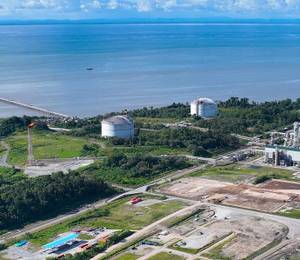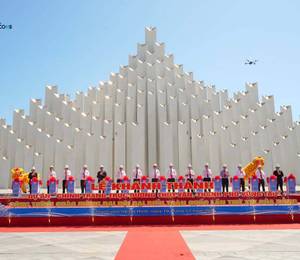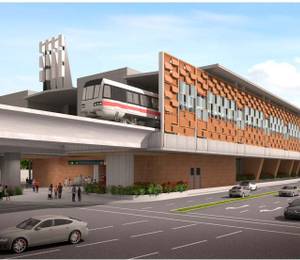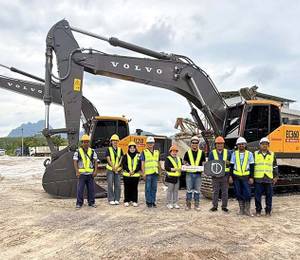Located in northern Borneo, Malaysia’s largest state of Sarawak is in transformation. It is actively pursuing the industrialisation of its agricultural sector, thus supporting farmers and rural communities, in line with the government’s initiatives to improve productivity and strengthen supply chains.
As part of this strategy, the region also requires infrastructure including the development of bridges and highways to traverse its numerous rivers. Among the latest projects is the Batang Lupar Bridge, which separates Simanggang, the capital of Sri Aman, from its neighbouring agricultural communities of Jalan Utama Kedua and Jalan Pasisir.
Working with the main contractor, Naim Gamuda (NAGA) JV Sdn Bhd, Doka Malaysia was engaged to provide a flexible formwork solution for the cable-stayed Batang Lupar Bridge No. 2, in particular to cater to the unusual shape of the pylons. Initially awarded in 2019, the bridge was placed on a one-year hiatus during the pandemic, meaning Doka’s solution also needed to play catch up without sacrificing safety or increasing cost.
Flexible formwork solution
For this project, Doka’s formwork solution will need to deliver four 145.5-m-high slopping pylons with two crossbeams at 16.87 and 94.15 m respectively, and a two-sided cast-in-situ deck slab at 20.87 m in height. Using an Automatic Climbing Formwork SKE 100 plus for the casting work, Load-bearing Tower d3, Load-bearing Tower Staxo 40 and a Ringlock Shoring System were used to cast the crossbeams and deck slab.
The Ringlock system was also used to temporarily access the Automatic Climbing Formwork SKE 100 plus platform at height. Based on the project’s remote location, the combination of Load-bearing Tower d3, Load-bearing Tower Staxo 40 and Ringlock resulted in a lower investment and transportation cost for the client, while Ringlock’s multifunctional features enabled its dual-purpose use as both shoring and access scaffolding.
Arguably, the most essential feature of the project was the Automatic Climbing Formwork SKE 100 plus system’s flexibility in shaping the pylons that gently taper until 94.15 m. Thanks to this craneless system, which also enabled the client to temporarily store materials on it to increase site efficiency, the project timeframe was reduced by two months, with the contractor optimistic that more time can be saved with an additional Automatic Climbing Formwork SKE 100 plus system commissioned for the remaining pylons on the other side of the river.
The project is currently in full swing and will likely be delivered within a year. Speaking on behalf of the main contractor, project manager Yii Hing commented, “Doka’s reputation for delivering fast and efficient formwork solutions is well known in the region, and its work on the Batang Lupar Bridge No. 2 has been no exception. From the physical products and systems to the engineering and safety support on site, the project has progressed ahead of schedule with complete consideration of our assigned budgets.”
All images: Doka
Note: This story has also been published in the Mar/Apr 2024 issue of SEAC. Click here to read online or here to download the PDF file (pages 48-51).













